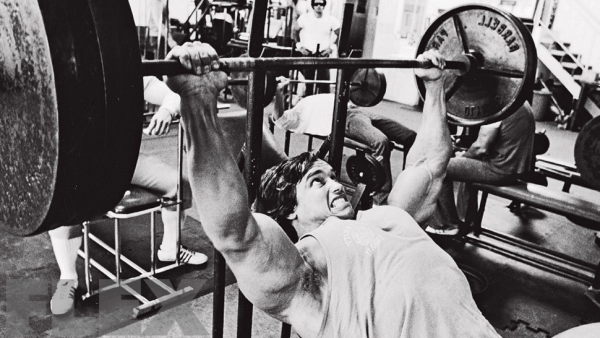Not sure how to set the incline bench when you’re looking to hit your upper chest on push day?
Thankfully, science has come to the rescue, with a study that reveals the optimal angle for developing those much-desired upper pecs.
The study relied on EMG activation data produced by young men when performing the bench press at a variety of different angles. These data show how hard different muscle groups are having to work under stress.

Optimal incline bench angle

Spanish sports scientist David Rodriguez-Ridao of the University of Almeria had thirty experienced young men bench press on a bench at 0, 15, 30, 45 and 60 degrees. He had stuck electrodes on the subjects’ skin that registered how hard the muscle groups underneath had to work.
For the middle and lower pecs, the flat bench press was superior to the incline bench press. For the upper part of the pectoral muscle, the stimulation was optimal at an angle of 30 degrees.

Although the results show that an angle of 30 degrees is optimal for the upper pecs when performing the incline bench, it’s worth nothing that the stimulation received isn’t massively greater than in a flat bench. There is, however, a significant drop in the extent to which the exercise hits the middle and lower portions of the chest as the angle increases to 30 degrees.
Any angle over 30 degrees converts the incline bench exercise into primarily a front deltoid (shoulder) exercise, rather than a chest exercise.
Interestingly, with regard to the triceps, the angle of the bench was not a factor: activation remained more or less the same.

Alter the tempo of your bench press for big gains in 2022!
Researchers have shown that altering the tempo of your bench press – specifically lowering the bar more slowly and raising it faster – can push your gains to the next level.
The research involved 20 subjects in their forties, all of whom had been doing weight training for between 18 and 19 years.
The researchers divided the subjects into two separate groups. The subjects in one group continued to train as they were used to, moving the weights at their own preferred speed for the bench press [SPS]. This group was used as the control group.
The experimental group, by contrast, performed bench presses at a fixed speed. The subjects pushed the weights up at 80-100 percent of their maximal speed [FPS].
The graph below shows that the upward (concentric) movement took the experimental group 0.8 seconds to perform, whereas this movement took the control group 1.3 seconds. The downward (eccentric) movement lasted 2 seconds in the experimental group and 1.5 seconds in the control group.
CLICK HERE TO READ MORE ABOUT HOW TO INCORPORATE THE FINDINGS OF THIS STUDY INTO YOUR TRAINING
So bear these findings in mind the next time you come to train your chest.
If it’s your upper pecs you want to hit especially hard, choose a 30 degree incline – but no more than that. If it’s your chest as whole you want to pound, stick with the flat bench, but maybe try the tempo tip given above.


Don’t hesitate to email us at [email protected] for personalized coaching and a client questionnaire if you’d like DEDICATED tailor-made personal training on strength training, building muscle, losing fat, developing athleticism, and more — all to your liking, lifestyle, habits, and taste!
Otherwise, don’t forget to claim your FREE eBook detailing how to lose 20lb of fat while building muscle in 12 weeks! You can claim it here.
Alternatively, you can pick up a FREE eBook on fundamental strength principles offering an introductory workout program.











